Maternally provided LSD1/KDM1A enables the maternal-to-zygotic transition and prevents defects that manifest postnatally
- PMID: 26814574
- PMCID: PMC4829428
- DOI: 10.7554/eLife.08848
Maternally provided LSD1/KDM1A enables the maternal-to-zygotic transition and prevents defects that manifest postnatally
Abstract
Somatic cell nuclear transfer has established that the oocyte contains maternal factors with epigenetic reprogramming capacity. Yet the identity and function of these maternal factors during the gamete to embryo transition remains poorly understood. In C. elegans, LSD1/KDM1A enables this transition by removing H3K4me2 and preventing the transgenerational inheritance of transcription patterns. Here we show that loss of maternal LSD1/KDM1A in mice results in embryonic arrest at the 1-2 cell stage, with arrested embryos failing to undergo the maternal-to-zygotic transition. This suggests that LSD1/KDM1A maternal reprogramming is conserved. Moreover, partial loss of maternal LSD1/KDM1A results in striking phenotypes weeks after fertilization; including perinatal lethality and abnormal behavior in surviving adults. These maternal effect hypomorphic phenotypes are associated with alterations in DNA methylation and expression at imprinted genes. These results establish a novel mammalian paradigm where defects in early epigenetic reprogramming can lead to defects that manifest later in development.
Keywords: KDM1a; LSD1; MZT; developmental biology; epigenetics; genomic imprinting; maternal effect; mouse; stem cells.
Conflict of interest statement
The authors declare that no competing interests exist.
Figures

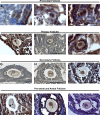


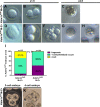
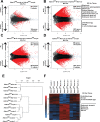
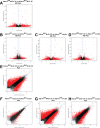

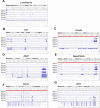






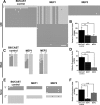
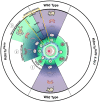
Comment in
-
A Histone-Modifying Enzyme and the Maternal-to-Zygotic Transition.Biol Reprod. 2016 May;94(5):99. doi: 10.1095/biolreprod.116.139428. Epub 2016 Feb 24. Biol Reprod. 2016. PMID: 27150609 No abstract available.
Similar articles
-
Maternal LSD1/KDM1A is an essential regulator of chromatin and transcription landscapes during zygotic genome activation.Elife. 2016 Feb 2;5:e08851. doi: 10.7554/eLife.08851. Elife. 2016. PMID: 26836306 Free PMC article.
-
SPR-1/CoREST facilitates the maternal epigenetic reprogramming of the histone demethylase SPR-5/LSD1.Genetics. 2023 Mar 2;223(3):iyad005. doi: 10.1093/genetics/iyad005. Genetics. 2023. PMID: 36655746 Free PMC article.
-
Extending the maternal-zygotic effect with genomic imprinting.Mol Hum Reprod. 2010 Sep;16(9):695-703. doi: 10.1093/molehr/gaq028. Epub 2010 Apr 9. Mol Hum Reprod. 2010. PMID: 20382782
-
The maternal to zygotic transition in mammals.Mol Aspects Med. 2013 Oct;34(5):919-38. doi: 10.1016/j.mam.2013.01.003. Epub 2013 Jan 23. Mol Aspects Med. 2013. PMID: 23352575 Free PMC article. Review.
-
Histone methyl-transferases and demethylases in the autophagy regulatory network: the emerging role of KDM1A/LSD1 demethylase.Autophagy. 2019 Feb;15(2):187-196. doi: 10.1080/15548627.2018.1520546. Epub 2018 Sep 22. Autophagy. 2019. PMID: 30208749 Free PMC article. Review.
Cited by
-
Lifestyle and Genetic Factors Modify Parent-of-Origin Effects on the Human Methylome.EBioMedicine. 2021 Dec;74:103730. doi: 10.1016/j.ebiom.2021.103730. Epub 2021 Dec 6. EBioMedicine. 2021. PMID: 34883445 Free PMC article.
-
A Resource for the Allele-Specific Analysis of DNA Methylation at Multiple Genomically Imprinted Loci in Mice.G3 (Bethesda). 2018 Jan 4;8(1):91-103. doi: 10.1534/g3.117.300417. G3 (Bethesda). 2018. PMID: 29138238 Free PMC article.
-
G9a regulates temporal preimplantation developmental program and lineage segregation in blastocyst.Elife. 2018 May 10;7:e33361. doi: 10.7554/eLife.33361. Elife. 2018. PMID: 29745895 Free PMC article.
-
The role and mechanisms of DNA methylation in the oocyte.Essays Biochem. 2019 Dec 20;63(6):691-705. doi: 10.1042/EBC20190043. Essays Biochem. 2019. PMID: 31782490 Free PMC article. Review.
-
The Dream and MEC NuRD Complexes reinforce SPR-5/MET-2 maternal reprogramming to maintain the germline-soma distinction.bioRxiv [Preprint]. 2025 Jul 27:2025.07.23.666413. doi: 10.1101/2025.07.23.666413. bioRxiv. 2025. PMID: 40777264 Free PMC article. Preprint.
References
MeSH terms
Substances
Grants and funding
LinkOut - more resources
Full Text Sources
Other Literature Sources
Molecular Biology Databases

